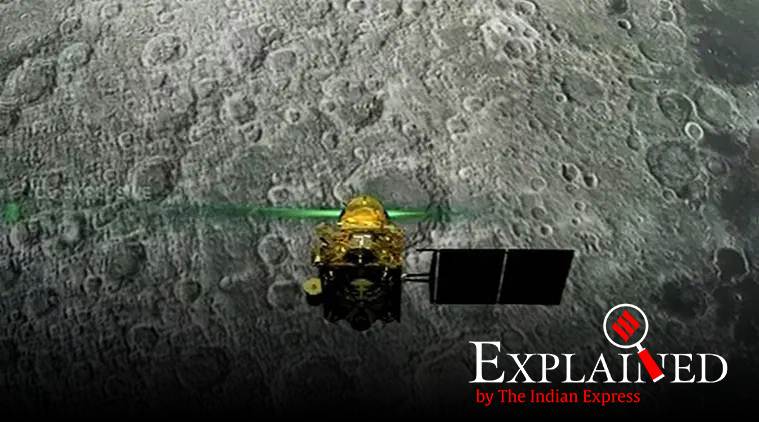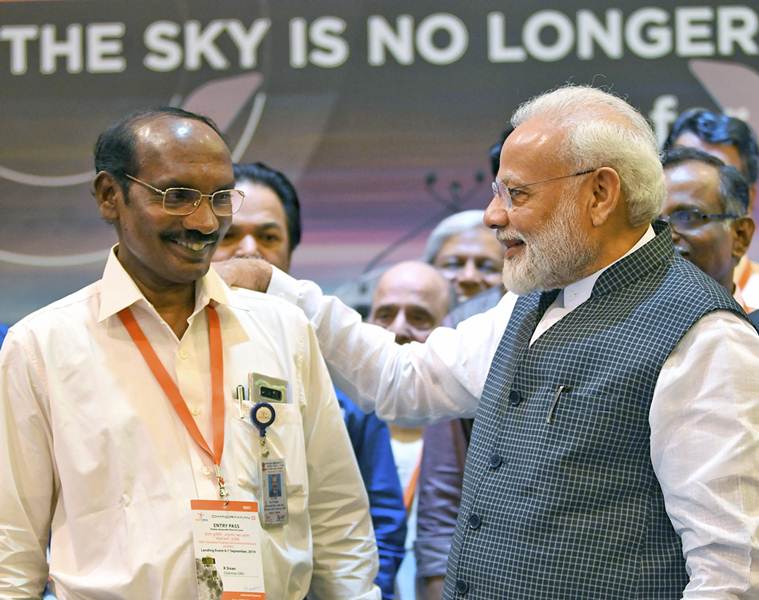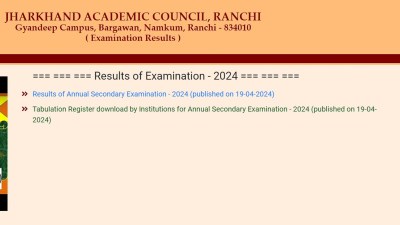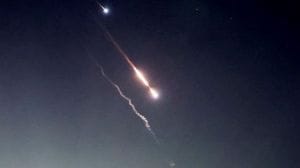- India
- International
Explained: How ISRO is trying to reconnect with Vikram Lander, within a deadline
ISRO's Chandrayaan-2 Moon landing mission: The nights on the Moon can be very cold, especially in the south polar region where Vikram is lying. Temperatures could drop to as low as -200°C. The instruments aboard the lander are not designed to withstand that kind of temperature.
 Chandrayaan-2: In the meanwhile, Vikram has been located on the Moon’s surface through the orbiter module, which has also taken a thermal image of the lander.
Chandrayaan-2: In the meanwhile, Vikram has been located on the Moon’s surface through the orbiter module, which has also taken a thermal image of the lander.
It is over three days since the Vikram lander of Chandrayaan-2 mission lost its communication link with the ground station. The Indian Space Research Organisation (ISRO) has said its efforts to restore the link have not been successful so far. In the meanwhile, Vikram has been located on the Moon’s surface through the orbiter module, which has also taken a thermal image of the lander. The condition of Vikram — whether it has been destroyed, or is still intact — is not yet known.
Is there still hope to restore contact with Chandrayaan-2’s Vikram Lander?
In this case, the time elapsed since contact was lost has no bearing on the chances of re-establishing contact with the lander. The probability of establishing contact is not going down with time. But there is a deadline nonetheless. The ISRO has to succeed in the next two weeks (by September 21).
Why this deadline?
Because the Moon will enter into a lunar night after that. Remember, even the lander and rover were supposed to be functional only for 14 days from the day of their touchdown. Lunar days and nights are equivalent to 14 Earth days. The nights on the Moon can be very cold, especially in the south polar region where Vikram is lying. Temperatures could drop to as low as -200°C. The instruments aboard the lander are not designed to withstand that kind of temperature. The electronics would not work and would get permanently damaged. So, if no connection is established in the next two weeks, ISRO will have to all but give up hope after that.
How is ISRO trying to establish contact with Vikram Lander?
Communication with remote objects is possible through electromagnetic waves. For purposes of space communication, frequencies in the S-band (microwave) and L-band (radio waves) of the electromagnetic spectrum are usually used. As of now, it is not known why the communication link was lost. Since it happened when the lander was in flight, power failure in its communication unit can be a probable reason. But after that, the lander has hit the Moon’s surface at a speed far greater than needed for a safe landing. It could have suffered partial or complete damage.
Communication with the instruments can be made only if those instruments are in working condition. Vikram was designed to communicate with both the ground station and with the orbiter. An attempt is being made from both to restore contact. Signals of specific frequencies, which the instruments on the lander are tuned to receive, are being sent in the hope that one instrument or the other would be able to receive them and respond.

 Chandrayaan-2: Prime Minister Narendra Modi with ISRO Chairman Kailasavadivoo Sivan in Bengaluru, Saturday, Sept. 7, 2019. (PIB/PTI Photo)
Chandrayaan-2: Prime Minister Narendra Modi with ISRO Chairman Kailasavadivoo Sivan in Bengaluru, Saturday, Sept. 7, 2019. (PIB/PTI Photo)
What factors can help or hinder this?
A key issue is the position of the antenna on the lander. It was supposed to be erect and free of any obstructions, so that it could scan a wide area to receive signals. A torchlight, if held up for example, spreads in a conical fashion and after a certain distance, the cone would spread almost 180°. A vertical antenna can also scan for signals from a similarly vast conical area. However, if the antenna is buried, pointing towards the ground, or is otherwise obstructed, its ability to receive signals would be diminished considerably. The conical area in which it can scan would also be reduced.
The orbiter has the best chance to establish contact. Making many revolutions of the Moon every day, it will be trying to send signals to Vikram every time it crosses over it.
An Expert Explains: Why experimentation is important, and why the journey matters, too
It is not rare to lose contact with a space object, and then re-establish connection. But it is far more easier if the space object is in orbit, or otherwise in good working condition.
More Explained
EXPRESS OPINION
Apr 19: Latest News
- 01
- 02
- 03
- 04
- 05








































